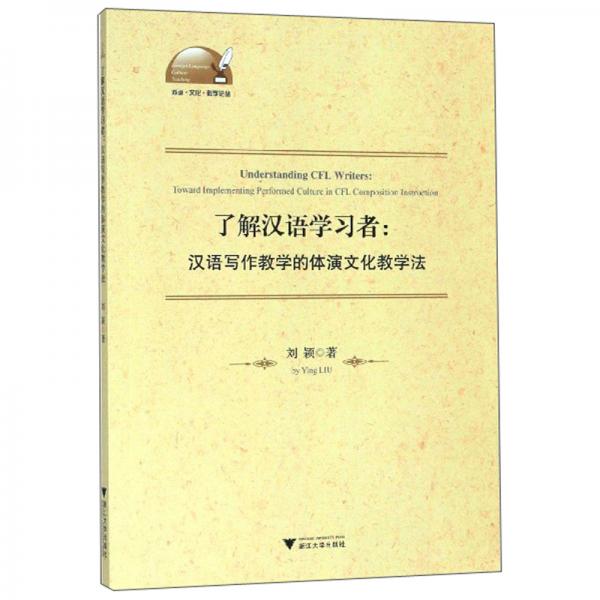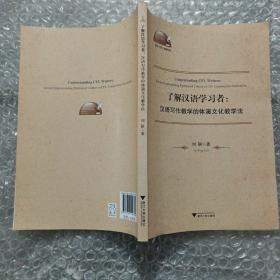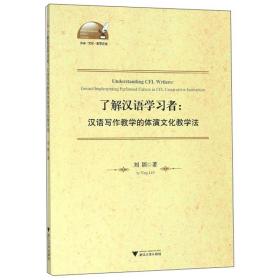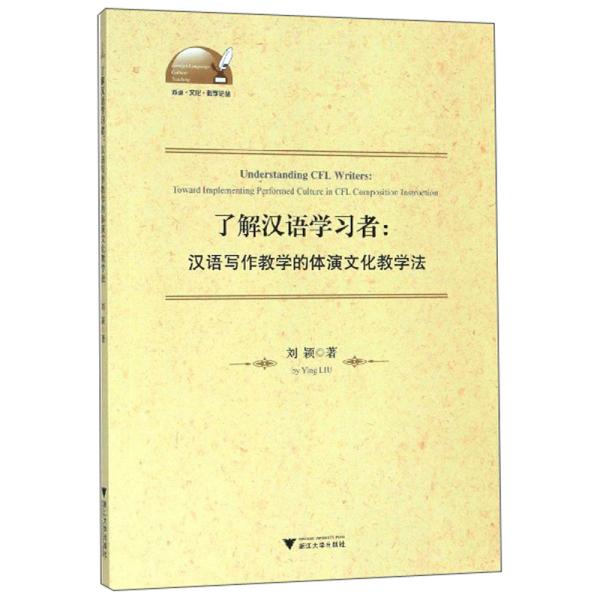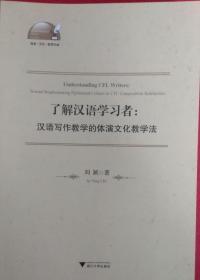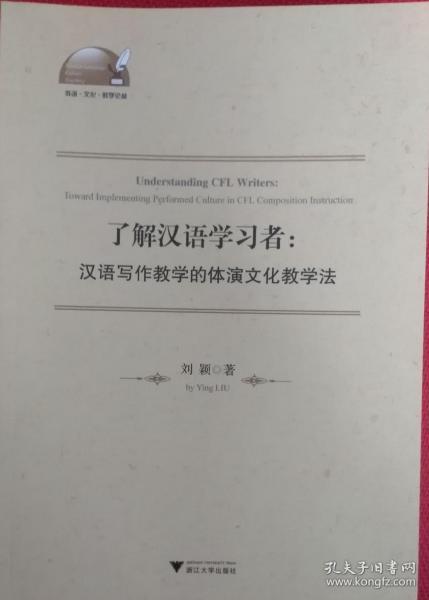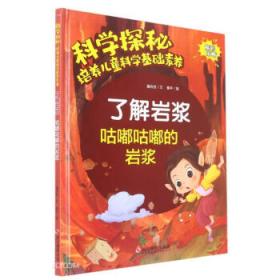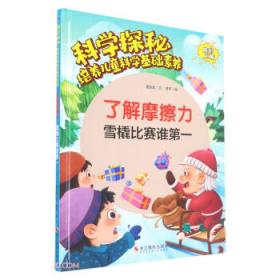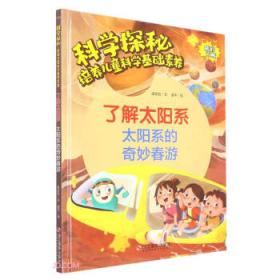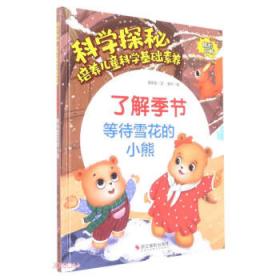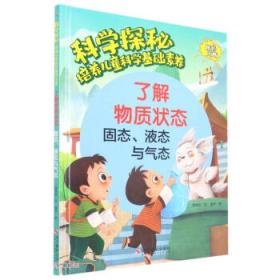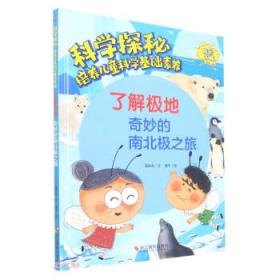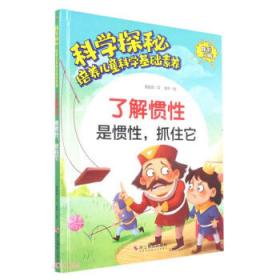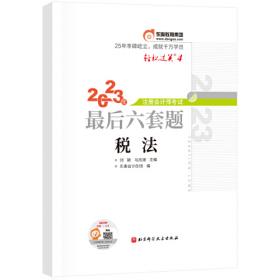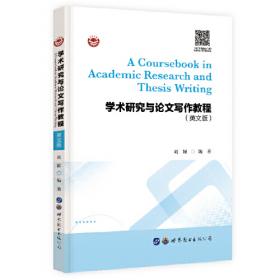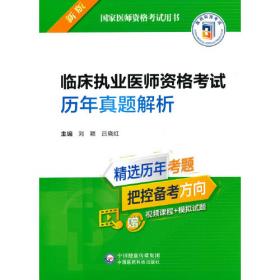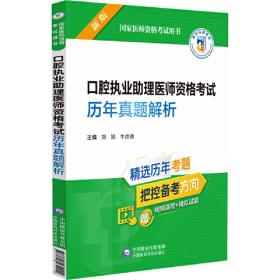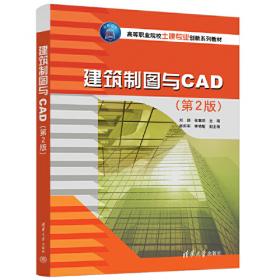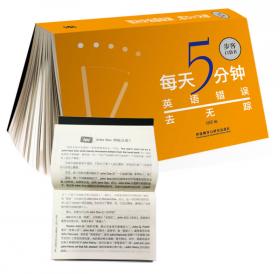了解汉语学习者:汉语写作教学的体演文化教学法(英文版)
出版时间:
2019-11
版次:
1
ISBN:
9787308196789
定价:
45.00
装帧:
平装
开本:
16开
纸张:
胶版纸
页数:
186页
3人买过
-
《了解汉语学习者:汉语写作教学的体演文化教学法(英文版)》在社会文化学的理论框架内,结合英语作为第二语言写作的新研究成果,分析了大量美国大学生汉语写作的实证数据,提出了汉语写作的体演文化教学法。书稿由社会文化学框架下的二语写作理论、汉语作为第二语言写作的需求调查分析、美国大学生汉语写作质性研究、汉语写作的体演文化教学法四个部分构成,具有一定的创新性,对相关课题做了较深入的研究和探析。 CHAPTER 1 Composition in the Context of Chinese as a Foreign Language
1.1 Increased Need for Composition in Chinese as a Foreign Language Program
1.2 Composition: Definition and Assumptions
1.2.1 Composition Is a Social Activity Rather Than a Solitary Act
1.2.2 Composition Is Based on a Shared Common Ground
1.2.3 Composition Is a Process of Negotiating Meaning
1.2.4 Toward a Pedagogical Model of Composition
1.3 Development of Composition Theories
1.3.1 Composition as a Product
1.3.2 Composition as a Process
1.3.3 Composition as a Social-interactive Practice
1.4 Theories of Composition in the Chinese L2 Context
1.4.1 Chinese Composition, Characters, and Shumianyu
1.4.2 Research in Chinese L2 Composition Instruction
1.5 Outline of the Book
CHAPTER 2 Cultural Aspects of Persuasive Composition
2.1 Composition as a Cultural Artifact
2.2 A Culture-based View of Persuasive Composition
2.2.1 The Role of Persuasive Composition in American Culture
2.2.2 The Perception of Evidence in American Culture
2.2.3 The Role of Persuasive Composition in Chinese Culture
2.2.4 The Perception of Evidence in Chinese Culture
2.3 Persuasive Composition in a Cross-cultural Context
CHAPTER 3 American Students' Interpretation of Chinese Evidence
3.1 Literature Review
3.1.1 From Contrastive to Intercultural Rhetoric
3.1.2 Chinese-English Contrastive Rhetoric
3.2 Research Questions
3.3 Research Method
3.3.1 Reasons for Utilizing the Qualitative Research Method
3.3.2 Trustworthiness of the Study
3.3.3 The Setting
3.3.4 The Participants
3.3.5 Data Sources
3.3.6 Data Analysis
3.4 American Students' Perceptions of Evidence in Chinese Persuasive Composition
3.4.1 Evidence in the Textbook
3.4.2 Evidence Introduced in Class
3.4.3 Students' Understanding of the Concept of Evidence
3.4.4 Students' Perceptions of Using Well-known Stories as Evidence
3.4.5 Students' Perceptions of Using Famous Sayings as Evidence
3.4.6 Students' Accounts of Legitimate Evidence
3.4.7 Students' Accounts of L1 versus L2 Education
3.4.8 Summary
3.5 American Students' Use of Evidence in Chinese Persuasive Compositions
3.6 Conclusions
3.6.1 Revisiting the Concept of Evidence
3.6.2 Culturally Constructed "Truth
3.6.3 Bridging Cultural Differences in Pedagogical Experience
CHAPTER 4 CFL Writers' Composition Performance in China
4.1 Culture, Performance, and Curriculum Design
4.2 Literature Review
4.3 Purpose of the Study
4.4 Research Method
4.4.1 Explanation of the Survey Research Method
4.4.2 The Survey
4.4.3 The Participants
4.5 Results
4.5.1 Biographical Data
4.5.2 Chinese L2 Learners' Composition in Their Everyday Lives
4.5.3 Chinese L2 Students' Composition Performances in the Workplace
4.5.4 Chinese L2 Learners' Composition Performances in Academic Contexts
4.6 Discussions
4.6.1 Discourse Community, Domain, and Genre
4.6.2 Levels of Generic Conceptualizations
4.7 Pedagogical Implications
4.7.1 Level One: Daily Task Composition
4.7.2 Level Two: Informal Correspondence
4.7.3 Level Three: Compositions with Formal Elements
4.7.4 Level Four: Acquisition Model of Instruction Gradually Introduced
4.7.5 Level Five: Domain-specific Compositions
CHAPTER 5 Toward a Performed Culture Instruction in Chinese L2 Composition
5.1 Framework for Developing a Chinese L2 Composition Curriculum
5.1.1 Cultural Studies
5.1.2 Ethnographic Studies
5.1.3 Studies of Genre Analysis
5.1.4 Linguistic Studies
5.1.5 Psychological Studies
5.1.6 Educational Studies
5.2 Persuasive Composition in Chinese L2 Curriculum
5.3 Organizing a Curriculum for Performed Culture Composition
5.3.1 The Performed Culture Approach Meets Students' Needs in Target Contexts
5.3.2 Goals and Objectives of a Performed Culture Composition Curriculum
5.3.3 Sequencing the Performances in a Performed Culture Composition Curriculum
5.3.4 Selecting Model Compositions in a Performed Culture Composition Curriculum
5.4 Implementing a Performed Culture Approach in Chinese L2 Composition Courses
5.4.1 The Role of the Learning Cycle in a Performed Culture Composition Class
5.4.2 Modeling the Context
5.4.3 Deconstructing the Model Composition
5.4.4 Scaffolding Activities
5.4.5 Constructing Chinese L2 Compositions
5.5 Conclusion and Future Research
BIBLIOGRAPHY
APPENDIX A Interview Questions to Chinese L2 Students
APPENDIX B Interview Questions to the Course Instructor
APPENDIX C Survey Questionnaire of Chinese L2 Learners' Composition Performances
APPENDIX D Results of the Web-based Survey of Chinese L2 Learners' Composition Performances
INDEX
-
内容简介:
《了解汉语学习者:汉语写作教学的体演文化教学法(英文版)》在社会文化学的理论框架内,结合英语作为第二语言写作的新研究成果,分析了大量美国大学生汉语写作的实证数据,提出了汉语写作的体演文化教学法。书稿由社会文化学框架下的二语写作理论、汉语作为第二语言写作的需求调查分析、美国大学生汉语写作质性研究、汉语写作的体演文化教学法四个部分构成,具有一定的创新性,对相关课题做了较深入的研究和探析。
-
目录:
CHAPTER 1 Composition in the Context of Chinese as a Foreign Language
1.1 Increased Need for Composition in Chinese as a Foreign Language Program
1.2 Composition: Definition and Assumptions
1.2.1 Composition Is a Social Activity Rather Than a Solitary Act
1.2.2 Composition Is Based on a Shared Common Ground
1.2.3 Composition Is a Process of Negotiating Meaning
1.2.4 Toward a Pedagogical Model of Composition
1.3 Development of Composition Theories
1.3.1 Composition as a Product
1.3.2 Composition as a Process
1.3.3 Composition as a Social-interactive Practice
1.4 Theories of Composition in the Chinese L2 Context
1.4.1 Chinese Composition, Characters, and Shumianyu
1.4.2 Research in Chinese L2 Composition Instruction
1.5 Outline of the Book
CHAPTER 2 Cultural Aspects of Persuasive Composition
2.1 Composition as a Cultural Artifact
2.2 A Culture-based View of Persuasive Composition
2.2.1 The Role of Persuasive Composition in American Culture
2.2.2 The Perception of Evidence in American Culture
2.2.3 The Role of Persuasive Composition in Chinese Culture
2.2.4 The Perception of Evidence in Chinese Culture
2.3 Persuasive Composition in a Cross-cultural Context
CHAPTER 3 American Students' Interpretation of Chinese Evidence
3.1 Literature Review
3.1.1 From Contrastive to Intercultural Rhetoric
3.1.2 Chinese-English Contrastive Rhetoric
3.2 Research Questions
3.3 Research Method
3.3.1 Reasons for Utilizing the Qualitative Research Method
3.3.2 Trustworthiness of the Study
3.3.3 The Setting
3.3.4 The Participants
3.3.5 Data Sources
3.3.6 Data Analysis
3.4 American Students' Perceptions of Evidence in Chinese Persuasive Composition
3.4.1 Evidence in the Textbook
3.4.2 Evidence Introduced in Class
3.4.3 Students' Understanding of the Concept of Evidence
3.4.4 Students' Perceptions of Using Well-known Stories as Evidence
3.4.5 Students' Perceptions of Using Famous Sayings as Evidence
3.4.6 Students' Accounts of Legitimate Evidence
3.4.7 Students' Accounts of L1 versus L2 Education
3.4.8 Summary
3.5 American Students' Use of Evidence in Chinese Persuasive Compositions
3.6 Conclusions
3.6.1 Revisiting the Concept of Evidence
3.6.2 Culturally Constructed "Truth
3.6.3 Bridging Cultural Differences in Pedagogical Experience
CHAPTER 4 CFL Writers' Composition Performance in China
4.1 Culture, Performance, and Curriculum Design
4.2 Literature Review
4.3 Purpose of the Study
4.4 Research Method
4.4.1 Explanation of the Survey Research Method
4.4.2 The Survey
4.4.3 The Participants
4.5 Results
4.5.1 Biographical Data
4.5.2 Chinese L2 Learners' Composition in Their Everyday Lives
4.5.3 Chinese L2 Students' Composition Performances in the Workplace
4.5.4 Chinese L2 Learners' Composition Performances in Academic Contexts
4.6 Discussions
4.6.1 Discourse Community, Domain, and Genre
4.6.2 Levels of Generic Conceptualizations
4.7 Pedagogical Implications
4.7.1 Level One: Daily Task Composition
4.7.2 Level Two: Informal Correspondence
4.7.3 Level Three: Compositions with Formal Elements
4.7.4 Level Four: Acquisition Model of Instruction Gradually Introduced
4.7.5 Level Five: Domain-specific Compositions
CHAPTER 5 Toward a Performed Culture Instruction in Chinese L2 Composition
5.1 Framework for Developing a Chinese L2 Composition Curriculum
5.1.1 Cultural Studies
5.1.2 Ethnographic Studies
5.1.3 Studies of Genre Analysis
5.1.4 Linguistic Studies
5.1.5 Psychological Studies
5.1.6 Educational Studies
5.2 Persuasive Composition in Chinese L2 Curriculum
5.3 Organizing a Curriculum for Performed Culture Composition
5.3.1 The Performed Culture Approach Meets Students' Needs in Target Contexts
5.3.2 Goals and Objectives of a Performed Culture Composition Curriculum
5.3.3 Sequencing the Performances in a Performed Culture Composition Curriculum
5.3.4 Selecting Model Compositions in a Performed Culture Composition Curriculum
5.4 Implementing a Performed Culture Approach in Chinese L2 Composition Courses
5.4.1 The Role of the Learning Cycle in a Performed Culture Composition Class
5.4.2 Modeling the Context
5.4.3 Deconstructing the Model Composition
5.4.4 Scaffolding Activities
5.4.5 Constructing Chinese L2 Compositions
5.5 Conclusion and Future Research
BIBLIOGRAPHY
APPENDIX A Interview Questions to Chinese L2 Students
APPENDIX B Interview Questions to the Course Instructor
APPENDIX C Survey Questionnaire of Chinese L2 Learners' Composition Performances
APPENDIX D Results of the Web-based Survey of Chinese L2 Learners' Composition Performances
INDEX
查看详情
-
九五品
河南省商丘市
平均发货42小时
成功完成率84.56%
-
九五品
北京市朝阳区
平均发货27小时
成功完成率85.7%
-
九品
北京市东城区
平均发货24小时
成功完成率87.42%
-
九五品
北京市海淀区
平均发货5小时
成功完成率91.01%

 占位居中
占位居中

